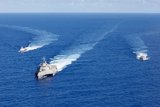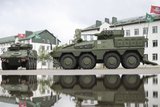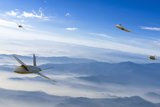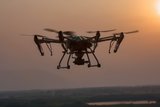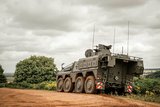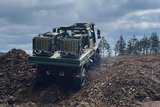Customise your combat vehicle
This article is brought to you by BAE Systems
We can’t predict the future. But we can make sure our European allies are prepared for it with our modular combat systems.
There has not been a more critical moment for global security in modern times. Europe’s battlefields are evolving and, as new threats emerge, combat vehicles must stay one step ahead, seamlessly adapting to new technologies to counter emerging threats and exploit vulnerabilities. At BAE Systems, we’re pushing the boundaries to identify and integrate cutting-edge technologies that will enable our vehicles to tackle new missions and bring advanced capabilities to militaries – at the pace that modern warfare demands.
Systems integration for tomorrow’s fight
Counter-UAS systems. Active protection systems. New sensors. Advanced networking packages. Upgraded turrets. Artillery systems. Autonomy.
Based on the future threats that NATO forces will face on the battlefield, these are just a few of the technologies we’re looking to integrate onto our vehicles. Through a combination of digital engineering, systems integration expertise, and proactive teaming with industry partners and academia, these innovations will enable warfighters across the globe to take on new missions.
Systems integration is the future of our combat vehicle fleets. After going through testing and development, our vehicles currently in production are ready to integrate new capabilities that militaries need.
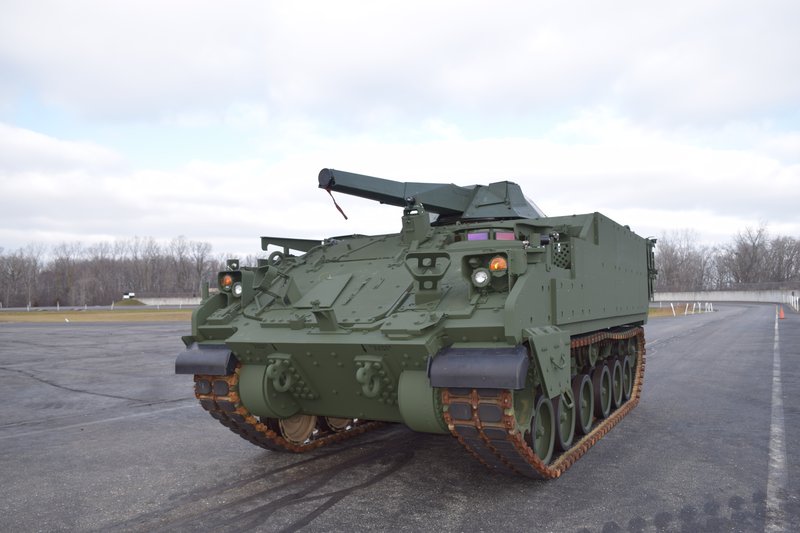
The Armoured Multi-Purpose Vehicle (AMPV) is a prime example of the sophistication we can offer. Last August, AMPV entered full-rate production. Since then, our engineers developed a common top plate for the vehicle, which can host more than 30 turrets, regardless of supplier. With the common top plate, we can partner with companies across the globe to deliver new capabilities needed on the battlefield.
To date, we have showcased four prototypes, including an AMPV prototype equipped with an unmanned turreted mortar capability from Finland-based Patria. By using the common top plate for integration, this prototype would provide Soldiers with an indirect and direct fire support platform that can be used in multi-mission scenarios. In a separate prototype effort, we also installed a counter-UAS system onto an AMPV, and successfully demonstrated it against aerial and ground targets last year.
Our ACV family is another base platform that’s ready to add new capability. This modular vehicle already has three different variants in production with a fourth vehicle, a recovery variant, in final development and test. The ACV is capable of any mission, land or sea. We’ve recently integrated and showcased a new battle management software called the Integrated Combat Solution that expedites users’ local targeting and situational awareness. We also tested advanced command and control systems, as well as counter-UAS and sensor technologies on-board the ACV. This is another platform that’s rich in opportunity – with significant potential in Size, Weight, Power and Cost advantages – and hungry for the integration of new tech.
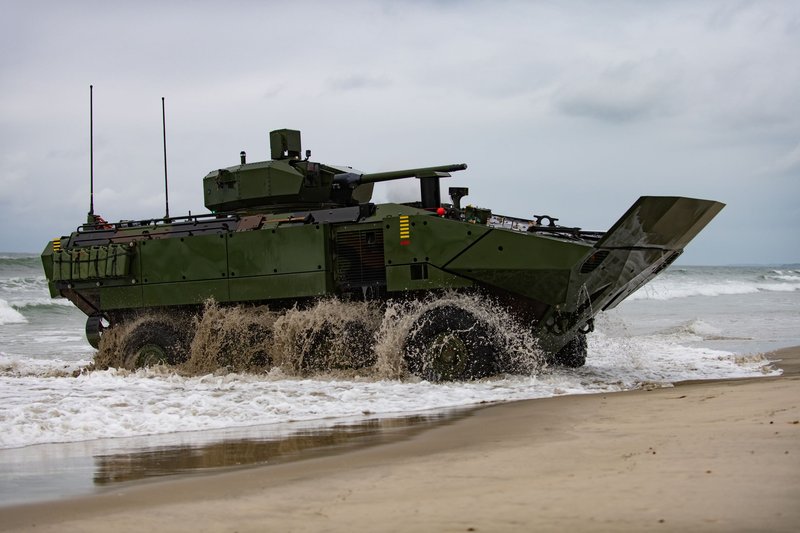
What do these two vehicles have in common? They are designed and fielded with the modularity required to easily integrate new technologies to tackle new missions, instead of spending years developing all-new vehicles.
The Need for Speed
Systems integration will be central to ensuring that NATO forces receive new capability quickly. Militaries cannot wait 10 years for new vehicle programmes to reach full-rate production. They need capability to be integrated onto existing platforms at the pace the battlefield demands.
Our aim as a systems integrator is to drastically reduce capability insertion timelines. We rely on digital engineering and work through integration challenges in a digital environment, prior to physical integration on top of a vehicle, and even simulate how other upgrades will impact the performance of a vehicle.
Our approach moving forward is simple: We’ve developed base platforms, which are ready now to integrate the technologies that our allies need for the battlefield today, and the future tomorrow.
More from Industry Spotlights
-
![The future is here: Sixth-gen air dominance]()
The future is here: Sixth-gen air dominance
How RTX is equipping the military airspace – for today’s fleet and tomorrow’s fight.
-
![De-Risking the Future: Manufacturing Certainty for Unmanned Systems]()
De-Risking the Future: Manufacturing Certainty for Unmanned Systems
How strategic manufacturing partnership solves the industrialisation triad — Scale, Compliance and Cost — for hyper-growth defence tech innovators.
-
![Battlefield mobility, made in the UK]()
Battlefield mobility, made in the UK
How does Britain ensure that we can preserve the lives of our soldiers and allies – now and in the future – with homegrown innovation and resilient domestic manufacturing? At Pearson Engineering, we are proud to be a central part of the answer to this increasingly important question.
-
![Strengthening Baltic defence capabilities]()
Strengthening Baltic defence capabilities
How Latvia is bolstering its territorial defences, industrial capacity and international cooperation with Dynamit Nobel Defence’s SKORPION2 Remote Mining System.
-
![Barco’s vision to trust: from past to future]()
Barco’s vision to trust: from past to future
Barco’s story is one of constant evolution enabling more immersive, reliable, and future-ready training experiences.
-
![How are next-generation ejection seats helping pilots when they need it most?]()
How are next-generation ejection seats helping pilots when they need it most?
The ACES 5 ejection seat from RTX’s Collins Aerospace introduces new, innovative and patented technologies to help save lives.











